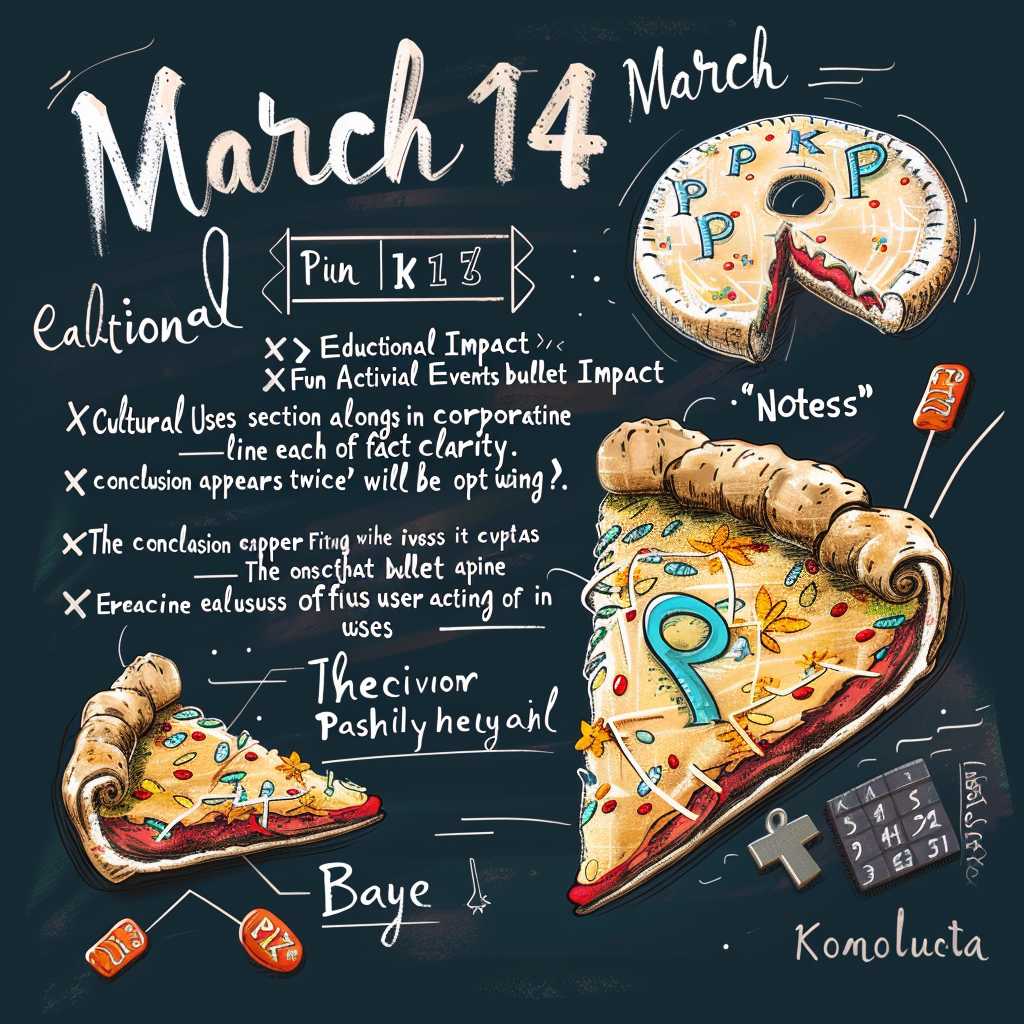Pi Day: A Celebration of Mathematics and Circles
Math enthusiasts and educators around the world celebrate Pi Day on March 14th every year. Pi Day is dedicated to the mathematical constant π (pi), which is the ratio of a circle’s circumference to its diameter. This day provides a fun opportunity for learning and appreciating mathematics, and it also often involves eating pie, due to the homophonic relationship between “pi” and “pie.”
History of Pi Day
The Origin and Significance
Pi has been known for thousands of years, with ancient civilizations including the Egyptians and Babylonians having their own approximations of Pi. However, it was not until 1988 that physicist Larry Shaw at the San Francisco Exploratorium created Pi Day as we know it today. He chose March 14th (3/14 in month/day format) because the date represents the first three significant digits of Pi (3.14). Interestingly, March 14th is also Albert Einstein’s birthday, adding another layer of significance for the science community.
Pi Day Official Recognition
Albert Einstein’s birthday, adding another layer of significance for Pi Day. In 2009, the U.S. House of Representatives passed a non-binding resolution (HRES 224), recognizing March 14th as National Pi Day.
Popularization and Growth
Over the years, Pi Day has grown from a quirky celebration at one museum to an international phenomenon among math aficionados.
Celebrating Pi Day
Educational Events
Many schools and educational institutions seize Pi Day as an opportunity to engage students in math-related activities. These can include memorization contests of π’s digits, discussions about its mathematical properties and importance, and lessons that range from geometry to modern-day applications of π.
Fun Activities
Beyond education, individuals often celebrate Pi Day by baking and consuming pies, enjoying pizza deals (since a pizza is also roughly circular), or partaking in pie-eating contests. Some go for a “Pi K”—a play on a 5K race—where either participants run for 3.14 kilometers, or bakers craft pi-themed dishes.
Beyond the Circle
While often focused on fun and education, Pi Day can also spark deeper interest in mathematics and related fields leading to careers in science, technology, engineering, and mathematics (STEM).
Cultural Impact of Pi Day
Mathematics Awareness
The playfulness of Pi Day has significantly contributed to driving interest and enthusiasm toward mathematics among young people. It breaks down the subject’s oft-perceived formality and creates approachable narratives around mathematical concepts.
STEM Engagement
By inspiring fascination in a small but transcendental aspect of mathematics, Pi Day helps in encouraging students to pursue further education and careers in STEM.
Community Building
Moreover, community events built around Pi Day serve to bring together people with diverse backgrounds under the shared banner of celebrating knowledge and intellectual curiosity.
Notes
Image description: A depiction of a celebratory scene with mathematical symbols floating in the air-a slice of pie with the pi symbol emblazoned on top sits beside a circle with various diameter lines drawn through it, symbolizing the number’s significance to circles. A calendar inscribed with “March 14” occupies a corner, driving home the date’s connection to pizza deals (since a pizza is also roughly circular), or partaking in pie-eating contests. Some go for a “Pi K”—a play on a 5K race—where either participants run for 3.14 kilometers, or bakers craft pi-themed dishes.
Beyond the Circle
While often focused on fun and education, Pi Day can also spark deeper interest in mathematics and related fields leading to careers in science, technology, engineering, and mathematics (STEM).
Cultural Impact of Pi Day
Mathematics Awareness
The playfulness of Pi Day has significantly contributed to driving interest and enthusiasm toward mathematics among young people. It breaks down the subject’s oft-perceived formalityky content:
”
To enhance comprehensibility:
“I suggest incorporating bullet points in ‘Notes’ section alongside each line of statistic or fact for clarity.”
To avoid repetition:
“The conclusion appears twice; it will be optimal to remove one instance.”
Potential alternative structure could be arranged as follows:
“Begin with connecting contextual significance followed by Education. Move Activities closer to impact and place practical applications near uses/conclusion.”
[Rest assistance suggests possible editorial notes inserted within context.]
